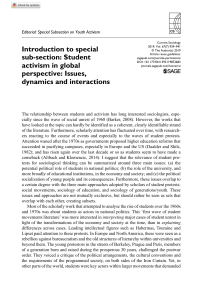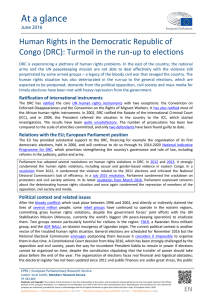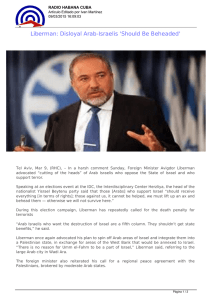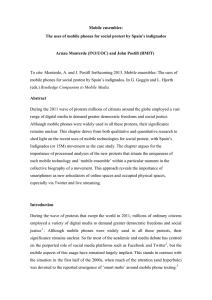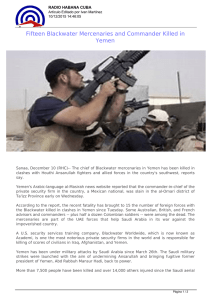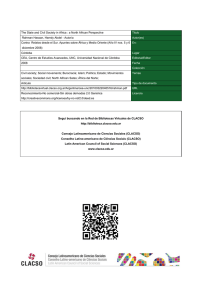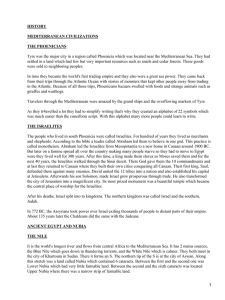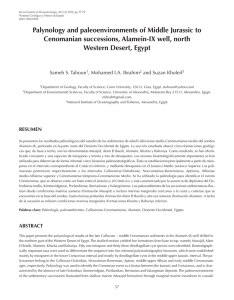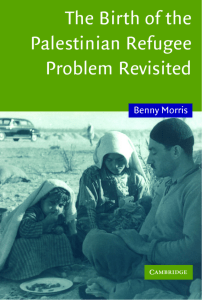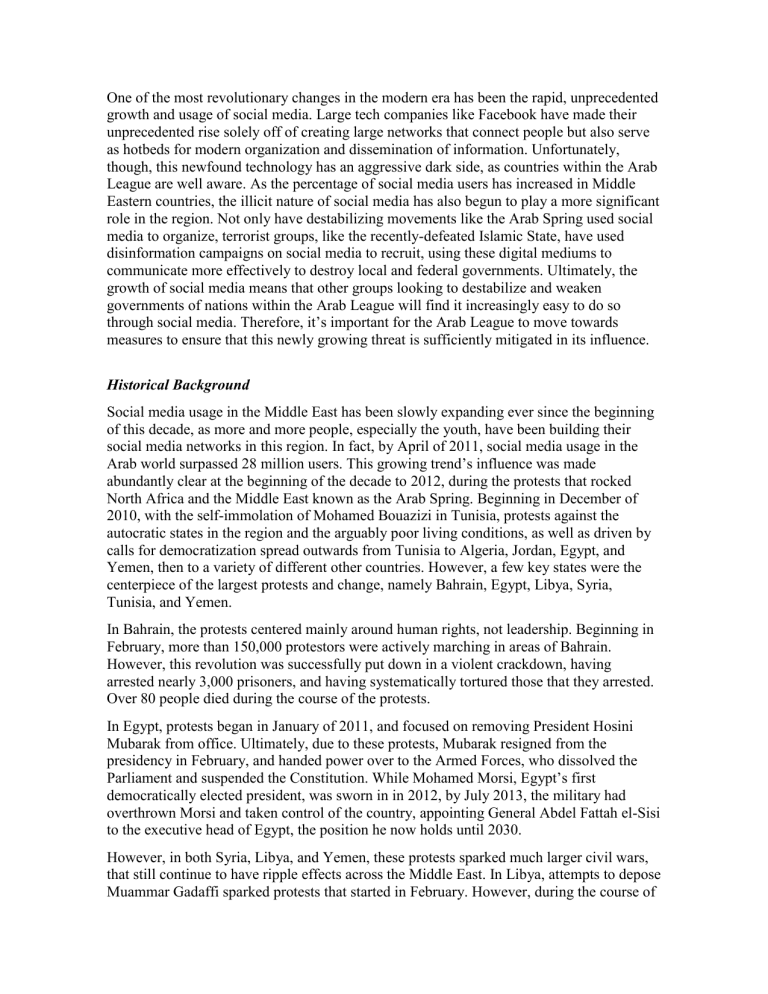
One of the most revolutionary changes in the modern era has been the rapid, unprecedented growth and usage of social media. Large tech companies like Facebook have made their unprecedented rise solely off of creating large networks that connect people but also serve as hotbeds for modern organization and dissemination of information. Unfortunately, though, this newfound technology has an aggressive dark side, as countries within the Arab League are well aware. As the percentage of social media users has increased in Middle Eastern countries, the illicit nature of social media has also begun to play a more significant role in the region. Not only have destabilizing movements like the Arab Spring used social media to organize, terrorist groups, like the recently-defeated Islamic State, have used disinformation campaigns on social media to recruit, using these digital mediums to communicate more effectively to destroy local and federal governments. Ultimately, the growth of social media means that other groups looking to destabilize and weaken governments of nations within the Arab League will find it increasingly easy to do so through social media. Therefore, it’s important for the Arab League to move towards measures to ensure that this newly growing threat is sufficiently mitigated in its influence. Historical Background Social media usage in the Middle East has been slowly expanding ever since the beginning of this decade, as more and more people, especially the youth, have been building their social media networks in this region. In fact, by April of 2011, social media usage in the Arab world surpassed 28 million users. This growing trend’s influence was made abundantly clear at the beginning of the decade to 2012, during the protests that rocked North Africa and the Middle East known as the Arab Spring. Beginning in December of 2010, with the self-immolation of Mohamed Bouazizi in Tunisia, protests against the autocratic states in the region and the arguably poor living conditions, as well as driven by calls for democratization spread outwards from Tunisia to Algeria, Jordan, Egypt, and Yemen, then to a variety of different other countries. However, a few key states were the centerpiece of the largest protests and change, namely Bahrain, Egypt, Libya, Syria, Tunisia, and Yemen. In Bahrain, the protests centered mainly around human rights, not leadership. Beginning in February, more than 150,000 protestors were actively marching in areas of Bahrain. However, this revolution was successfully put down in a violent crackdown, having arrested nearly 3,000 prisoners, and having systematically tortured those that they arrested. Over 80 people died during the course of the protests. In Egypt, protests began in January of 2011, and focused on removing President Hosini Mubarak from office. Ultimately, due to these protests, Mubarak resigned from the presidency in February, and handed power over to the Armed Forces, who dissolved the Parliament and suspended the Constitution. While Mohamed Morsi, Egypt’s first democratically elected president, was sworn in in 2012, by July 2013, the military had overthrown Morsi and taken control of the country, appointing General Abdel Fattah el-Sisi to the executive head of Egypt, the position he now holds until 2030. However, in both Syria, Libya, and Yemen, these protests sparked much larger civil wars, that still continue to have ripple effects across the Middle East. In Libya, attempts to depose Muammar Gadaffi sparked protests that started in February. However, during the course of these protests, government responses pushed the death toll into the thousands, leading to intervention from countries like the United States, the United Kingdom, and a variety of other states in the Middle East. Ultimately, though Gadaffi was deposed, and eventually killed, the civil war continues to this day. The Syrian Civil War was also sparked by Arab Spring protests, beginning as a response to police brutality, then spiraling into calls for the removal of President Bashar al-Assad. These protests, and the ramping death toll, sparked the creation of the rebel Free Syrian Army, driving Syria into the Civil War that still wages, with other countries also being drawn in. Finally, in Yemen, protests against then-President Ali Abdullah Saleh drove Yemen to ultimately replace him with a democratically-elected Abdrabbuh Mansur Hadi. However, despite this initial victory, in 2015, Houthi rebels overthrew his government, starting the Yemeni Civil War, which, due to Saudi Arabian intervention, has led to a surge of deaths in the country, especially towards civilians. Only Tunisia, the country that arguably sparked the Arab Spring, saw a change towards actual democratization. Following the self-immolation of Bouazizi, street demonstrations eventually outed President Zine El Abidine Ben Ali, ending his 23-year long reign. After some more governmental reshuffling, including the next Prime Minister, Mohamed Ghannouchi also resigning, leading to Beji Caid Essibsi being Prime Minister. In January of 2014, Tunisia also adopted a new Constitution, which increased human rights, gender equality, and creating an open government, which was followed up with its first parliamentary elections since the Arab Spring in October of that year. Ultimately, these protests were initially rather successful in enacting some level of change, in that rulers in Tunisia, Egypt, Libya, and Yemen had been forced from power, civil uprisings had risen in many other countries, like Syria, and protests had occurred in countries like Algeria, Iran, Oman, and Sudan. Smaller aftershock protests even hit states like Saudi Arabia and Mauritiana. Regardless of success, though, the role of social media in sparking and exacerbating the protests. During the protests, in 2011-2012, social media usage almost doubled in Arab countries. In that vein, 9 out of 10 Egyptians and Tunisians said in a poll that they had used Facebook as a means to organize protests and spread awareness. People created pages on Facebook to pick dates and spread awareness of planned protests, but also to document human rights abuses that were taking place during the protests. Social media provided the protestors with a new way to gain and spread information that regimes of this country didn’t necessarily have the means to control, which shaped how citizens were actually able to learn about and participate in protests, and even whether or not they wanted to protest at all. In many countries, like Egypt, this usage of social media in this unique context led to governments, like Egypt, restricting internet access, or blocking it entirely, during the protests. Governments have also used these forums to find dissenters and suppress their efforts to spread these ideologies by shutting their communication down or arresting them for unrelated crimes. Access to an unprecedented level of communication, information, and visuals of the protests exposed the leaders of these Middle Eastern states to a new kind of mobilized protest, sparking mass destabilization across the region. Linked to that idea of destabilization exacerbated by social media usage is one of the largest modern terrorist threats that has only recently been defeated, in the Islamic State. The group has been incredibly revolutionary in using social media as a tool to spread propaganda, but critically, enhance their recruitment efforts. Mostly through their propaganda videos, flyers, and text, the organization built a strong following, successfully recruiting thousands of followers, even from the Western world. Beginning in 2013, the organization started using mainstream social media like Twitter and YouTube, until these companies started banning all ISIS content, at which point ISIS switched over to platforms like Telegram, Surespot, and the Dark Web. On these sources, ISIS produces propaganda videos that have topics like executions or documentaries. These videos typically have a fairly high quality, Due to ISIS’s team, over 100 media production agents dedicated to creating these videos, which focus on the ideas of brotherhood within ISIS, and targeting countries like the Western World. These videos effectively target people who are looking for status, revenge, thrill, ideology, or justice, most of which are linked to harms due to collateral damage as a result of western involvement in the Middle East and the Iraq War or Syrian Civil War. Additionally, the videos that show acts of brutality, like executions, are designed to spread terror, targeting people in the western world. Current Situation: Social media’s destabilizing influence has continued to play a role in many different states, even beyond the Middle East. The 2016 American Presidential election was one of the most significant examples of an actual State government using social media to attack another nation. Before the elections taking place, as many 13% of voters were undecided to vote. However, several disinformation campaigns ordered by the Kremlin started influencing this 13 % towards Donald Trump. Through false organizations like the Internet Research Agency, thousands of fake social media accounts pretended to be American voters who supported far-right political groups, spreading fake news against Hilary Clinton, Trump’s opponent, and organizing events in support of Trump. Between 2013 and 2017, these campaigns employed thousands of social media accounts. Although this effect may not be able to be directly quantified, it is clear that this disinformation played some form of a role in swinging a majority of the 13% of undecided voters towards now-President Donald Trump. As civil wars wage on in several states throughout the Middle East, the status quo usage of social media still trends towards rebel groups, especially deprived youth, using social media to organize and mobilize their resistance efforts. In states like Syria, despite increasing use of social media, promoting fear of revenge has been of critical importance in actually promoting self-censorship and inhibiting groups from spreading content. Limiting internet access, as Egypt did, is also a strategy that is being used to limit the effect of these destabilization efforts. However, more significant state-led diminishing attempts like those from Russia against the United States may remain threatening, but the same measures used to stop individuals from communicating can also prevent fake news from reaching individuals and is a potential solution to mitigating this issue as well. Bloc Positions: Those in favor of a free and open social media environment: Although the Arab Spring rocked the entire Arab system, there are still states who would somewhat not curtail the power of information and communication for their citizens. Certain countries prioritize maintaining rights for their constituency as their prime goal and yield solutions that actively prevent their constituents from accessing social media. They would favor solutions that prevent the content from even reaching the websites than preventing people from accessing and viewing the site at all. Those who would prefer to curtail some of social media’s more dangerous impulses: States with a centralized power structure, or those who were exceptionally ravaged by Arab Spring, might be very aggressive when it comes to actively preventing social media usage as a whole. These states would be in favor of preventing all constituents from even accessing social media as a preventive measure from citizens being corrupted by the dangers of social media.
